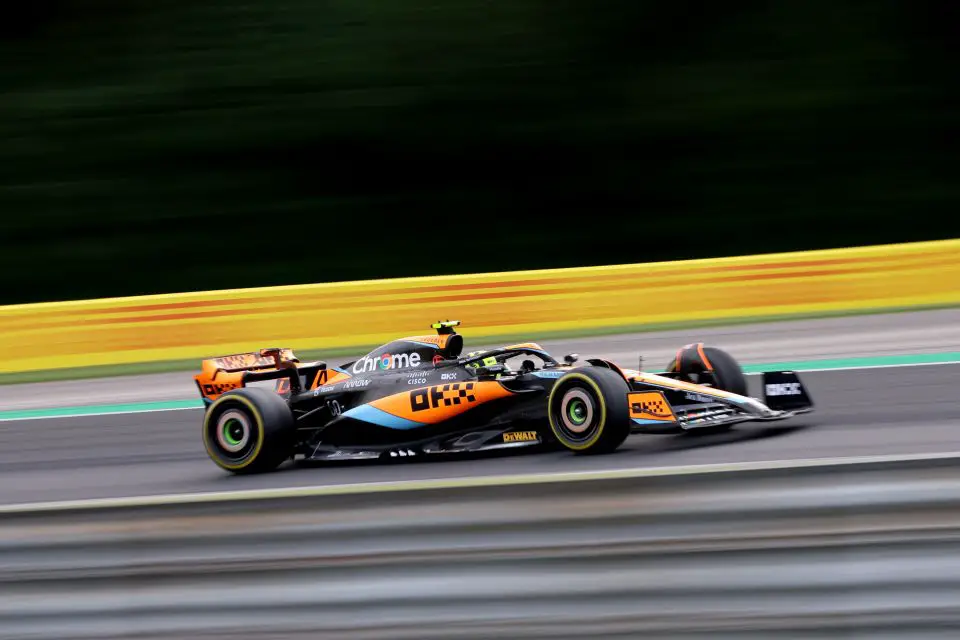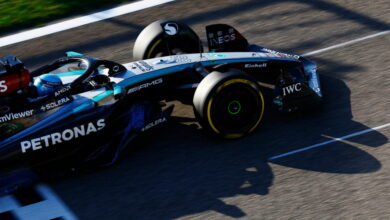McLaren Prioritizes Overcoming Low Downforce Challenges for 2024: A Deep Dive into Their F1 Strategy
In a recent revelation, McLaren Racing has identified addressing the low downforce issues in their MCL60 F1 car as a top priority for 2024. Despite significant performance improvements, they continue to lose competitiveness in low downforce scenarios, particularly highlighted at the Las Vegas Grand Prix.
Key Takeaways:
- Urgent Need for Downforce Solutions: McLaren Racing is keenly focusing on resolving the low downforce problem in their MCL60 car, which causes aerodynamic inefficiency at lower downforce levels, impacting the car’s overall performance.
- Impact of Circuit Demands: The increase in circuits demanding low downforce setups, such as Baku and Vegas, has made it essential for McLaren to optimize their car for such conditions to avoid losing points in the upcoming season.
- Technical Challenges and Strategy: Andrea Stella, McLaren’s team boss, detailed the technical difficulties in achieving a balanced aerodynamic performance. The team experimented with an ultra-low downforce setup before the Las Vegas GP but had to adjust due to the track’s low grip nature.

In the world of Formula 1, staying competitive requires constant evolution and adaptation, and McLaren Racing is no exception. The team has recently acknowledged a significant issue that has been affecting the performance of their MCL60 car – a problem with low downforce levels causing aerodynamic inefficiency. This issue has become a top priority for the team as they prepare for the 2024 season.
The problem was particularly evident during the Las Vegas Grand Prix. Despite McLaren making significant performance gains in the latter half of the season, rival teams seemed better prepared for low downforce conditions. This was a wake-up call for McLaren, as team boss Andrea Stella noted the team’s data showed a clear loss of performance in these scenarios. Stella pointed out, “We seem to lose competitiveness when we need to run the car at this drag level.”
Stella further elaborated on the technical aspects of the issue, explaining the sensitivity of the car’s aerodynamics and the non-linear loss of downforce that occurs. He stressed the importance of understanding and controlling the behavior of the car under these conditions, stating, “So rather than simply losing [downforce] linearly, there’s a point in which you lose more than linearly. And that’s what you would like to bring back to kind of a linear loss.”
One of the challenges for McLaren is the increasing number of circuits that require a low downforce setup. With the addition of tracks like Baku and Vegas, alongside traditional ones like Monza and Spa, it is crucial for the team to have an optimized car for a larger number of races. Stella highlighted this point, emphasizing the team’s added focus on low downforce development alongside their ongoing work on medium and high downforce.
Ahead of the Las Vegas GP, the team experimented with an ultra-low downforce setup, featuring a new rear wing flap and a beam wing option. However, due to the low grip nature of the new track, they decided not to use the beam wing. Stella reflected on this decision, acknowledging that while the upgrades were necessary, they did not fundamentally alter the car’s response to rear wing levels.
As McLaren gears up for the 2024 season, their focus on resolving the low downforce issue is clear. The team’s proactive approach to addressing this challenge will be crucial in their quest to maintain and enhance their competitiveness in the ever-evolving and demanding world of Formula 1 racing.


